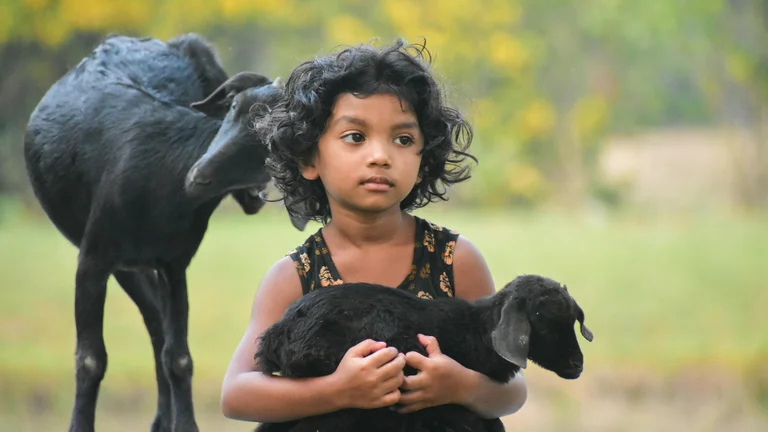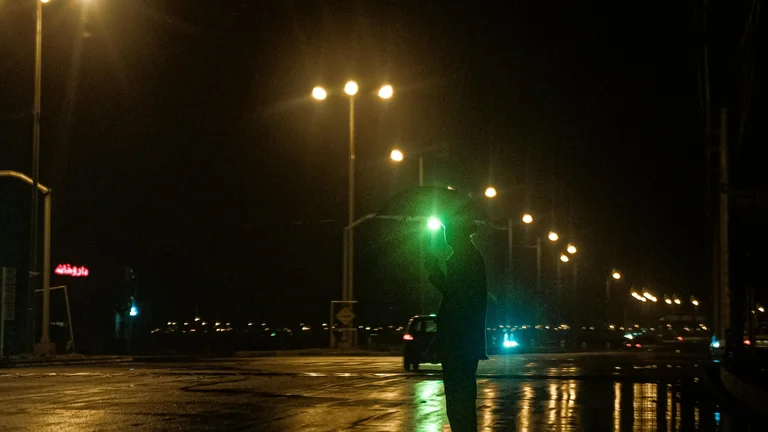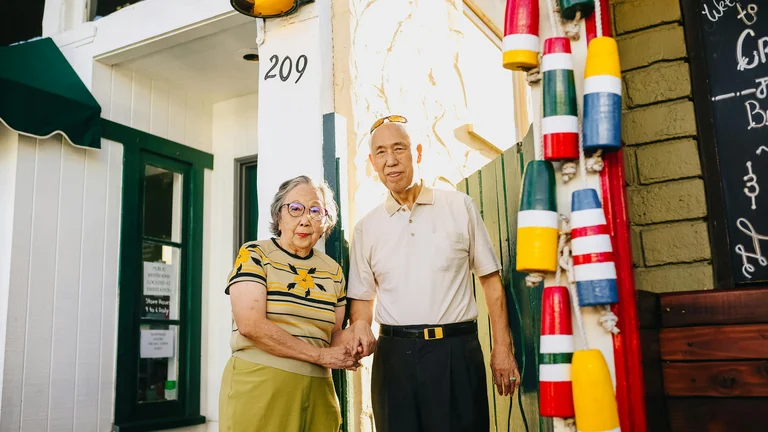
Cherry blossoms, known as sakura in Japanese and beot-kkot in Korean, hold significant symbolic and aesthetic value within East Asian culture. In Korean dramas, also known as K-dramas, cherry blossom scenes are frequently used to evoke emotion, create romantic ambiance, and signify themes such as fleeting beauty, new beginnings, or melancholic nostalgia. These scenes often become iconic moments due to their visual impact and emotional resonance with viewers. The presence of cherry blossoms enriches the narrative atmosphere by linking the characters' personal journeys to a broader seasonal and cultural context.
In K-dramas, cherry blossom scenes are not merely decorative. Directors and cinematographers arrange these moments with a precise intention, embedding layers of meaning into the visual storytelling. For example, a single frame of cherry petals fluttering in the wind can underscore a character’s inner turmoil or foreshadow an impending change. This symbolic usage has evolved over years from traditional cinematic practice to a hallmark of contemporary Korean storytelling, highlighting the connection between nature and human emotion.
The significance of cherry blossom scenes in K-dramas also hinges on their ability to connect Korean audiences with familiar seasonal cycles and cultural heritage. Springtime, when cherry blossoms bloom, is often depicted as a season of hope, youth, and transformation. Characters may meet under cherry trees, exchange important dialogues amid petals, or experience moments of silent reflection as the blossoms fall, signaling either transient happiness or inevitable farewells. Such imagery taps into universal themes of love, loss, and renewal, rendering these scenes deeply impactful on both emotional and aesthetic levels.
One of the most compelling aspects of iconic cherry blossom scenes in K-dramas is how they blend natural beauty with narrative climax. Episodic tension often peaks around cherry blossom festivals, school courtyards, or riverbanks adorned with soft pink petals. These carefully constructed set pieces provide a stunning backdrop that elevates key moments—confessions of love, reconciliations, farewells, or contemplative solitude. The contrast between the ephemeral nature of cherry blossoms and the permanence sought by characters highlights the poignancy of human experience.
Expanding on the variety of locations, cherry blossom scenes appear in diverse settings within K-dramas—from urban parks in Seoul to quiet university campuses. This range demonstrates the versatility of cherry blossoms as a symbol that transcends social classes and environments. Whether depicted in the vibrant streets of Gangnam or a modest village setting, the blossoms act as a leveling force, uniting characters through shared cultural imagery and universal emotional states.
While the visual aspect of cherry blossoms is often emphasized, sound design also plays a crucial role in making these scenes memorable. Many dramas accompany cherry blossom visuals with ambient sounds—soft breezes, the rustle of petals, gentle water flows—augmenting the sensory immersion. This auditory component amplifies the mood, inviting viewers into a multifaceted experience that combines sight and sound seamlessly.
Considering the technical craft behind these scenes, advanced cinematography and post-production techniques are vital. Slow-motion shots of petals falling, close-ups of hands brushing blossoms, or wide-angle views capturing entire groves under pastel skies contribute to the ethereal quality these scenes convey. Lighting choices frequently prioritize warm, natural hues to reflect spring’s freshness, while color grading fine-tunes softness and enhances the spatial depth of outdoor environments.
Production teams often synchronize shoot schedules specifically to capture peak bloom periods of cherry blossoms. This demands logistic coordination between studios, location scouts, and weather monitoring, as the brief window when blossoms are at optimal condition can be unpredictable. The ephemeral nature of cherry blossoms thus mirrors the challenges faced in production, which adds a meta-layer of significance to these scenes when successfully filmed and presented.
Analyzing the audience reception of cherry blossom scenes reveals that these moments often rank among the most memorable episodes or sequences in K-dramas. Social media reactions, fan art, and dedicated online discussions frequently highlight such scenes for their aesthetic charm and emotional depth. These cherry blossom moments create viral visuals that contribute to a drama’s popularity and cultural footprint beyond the initial broadcast period.
Below is a table summarizing notable K-dramas known for their iconic cherry blossom scenes, including the context and symbolic significance of these moments within the series:
| K-Drama Title | Year | Scene Description | Symbolic Meaning |
|---|---|---|---|
| "Crash Landing on You" | 2019 | Confession scene under cherry blossom trees during spring festival | New beginnings, fragile love crossing borders |
| "Reply 1988" | 2015 | Group friendship scenes amid blooming petals | Nostalgia, youth, community bonds |
| "Goblin (Guardian: The Lonely and Great God)" | 2016 | Emotional flashbacks set near cherry blossom walkways | Immortality contrasted with fleeting beauty |
| "W – Two Worlds" | 2016 | Character crossings between worlds during blossom season | Intersecting realities, transient moments |
| "It's Okay to Not Be Okay" | 2020 | Healing and transformation scenes by cherry blossom-laden river | Psychological renewal, hope |
These examples reveal how cherry blossom scenes differ in narrative function yet maintain a shared visual lexicon that resonates universally. Whether highlighting romance or introspection, these sequences continue to enrich K-drama storytelling with cultural and emotional layers.
Beyond romantic or nostalgic uses, cherry blossoms occasionally serve political or social narrative functions. For instance, blossoms may represent peace or reconciliation in dramas dealing with historical conflicts or divided families. The soft imagery contrasts with harsher themes, providing visual respite or metaphorical commentary on hope and unity despite adversity. Such nuanced deployment signifies the depth of thought given to cherry blossom integration.
To fully appreciate the role of cherry blossom scenes, understanding the biological and cultural background of cherry blossoms in Korea is useful. Cherry trees bloom briefly, typically lasting 1-2 weeks, symbolizing ephemerality and the preciousness of time. This brevity is central to the metaphorical weight attached to scenes involving these flowers. Historically, cherry blossom viewing, known as "beot-kkot-je," has been celebrated in Korean culture as a moment for reflection and communal enjoyment.
Exploring how Korean filmmakers specifically craft cherry blossom scenes reveals meticulous directorial choices. Scenes may begin with wide establishing shots of vast cherry blossom alleys, then slowly zoom into intimate portraits of characters. Dialogue timing, the presence of wind to scatter petals, and framing all coordinate to maximize emotional impact. In some instances, characters interacting with the blossoms—touching, catching petals—serve as non-verbal storytelling devices indicating vulnerability or longing.
The cultural synergy between Korean music and cherry blossom scenes also deserves attention. Soundtracks playing traditional Korean instruments or soft ballads often underscore these moments, creating harmony between visual and auditory elements. This fusion contributes to crafting scenes that linger in viewers’ memories long after the episode ends. Music selection is deliberate, sometimes featuring well-known Korean folk songs or newly composed themes to match the narrative mood.
Korean tourism has capitalized on the popularity of cherry blossom scenes from dramas, promoting filming locations as must-visit destinations. Sites like Yeouido Park in Seoul, Jinhae Cherry Blossom Festival, and Kyung Hee University have seen increased tourism linked to fans wanting to experience cherry blossom ambiance firsthand. This phenomenon exemplifies how K-dramas influence real-world behaviors and cultural engagement, turning cherry blossom scenes into experiential tourism boosters.
Integrating a step-by-step guide on shooting an effective cherry blossom scene can benefit emerging filmmakers. First, select a location with abundant cherry trees ensuring natural bloom timing matches production schedules. Second, plan for lighting conditions favoring soft natural daylight, preferably during golden hour, to enhance petal translucency. Third, employ slow-motion and close-up shots to capture petal movements. Fourth, incorporate ambient sound design to authentically represent spring sounds. Fifth, work closely with actors to choreograph subtle interactions with the blossoms to convey the intended emotional nuance. Lastly, consider color grading in post-production to emphasize pastel tones without oversaturation, sustaining the delicate atmosphere.
Some important technical considerations in filming cherry blossom scenes include shutter speed adjustments to capture petal motion crisply or softly blur them depending on desired effect. Depth of field is adjusted to keep faces or hands in sharp focus while backgrounds remain gently diffused, enhancing the dreamlike quality. Stabilization tools like gimbals aid smooth camera movement through tree-lined paths. Drones may provide sweeping aerial shots showcasing the scale of blossom coverage, adding epic visual scope that contrasts with intimate ground-level shots.
List of key benefits and purposes of cherry blossom scenes in K-dramas:
- Create a strong emotional and visual impact that complements storytelling
- Serve as cultural touchstones familiar to Korean and international audiences
- Highlight themes of transience, renewal, love, and memory
- Enhance scenic beauty and aesthetic appeal of the drama
- Support narrative pacing by marking transitions between plot arcs
- Encourage audience nostalgia and connection through shared cultural imagery
- Boost tourism by showcasing iconic Korean locations during blossom season
- Provide symbolic contrast in narratives involving tension or reconciliation
Evoking nature's cyclical rhythm, cherry blossom scenes invite viewers to contemplate impermanence and cherish present moments. Their repeated yet nuanced usage across K-dramas helps solidify an intangible atmosphere that audiences come to expect and appreciate.
Another lens to explore is the psychological effect cherry blossom scenes have on viewers. Research in color and environmental psychology suggests that the soft pink hues of blossoms can induce calm, reduce stress, and foster optimistic feelings. When combined with narrative content about relationships or personal growth, these visual cues enhance the overall emotional engagement and viewer satisfaction.
Comparing cherry blossom scenes in K-dramas to their use in other East Asian media reveals distinct stylistic and thematic approaches. Japanese dramas often root sakura scenes deeply in tradition and seasonal festivals, while Korean versions may hybridize modern urban settings with these natural elements. Chinese dramas, too, utilize plum blossoms symbolically but differ in seasonal and cultural connotations. This cross-cultural perspective enriches understanding of the unique identity cherry blossom scenes hold within Korean drama storytelling.
Table comparing cherry blossom scene characteristics across Korean, Japanese, and Chinese dramas:
| Aspect | K-Dramas | Japanese Dramas | Chinese Dramas |
|---|---|---|---|
| Primary Symbolism | Ephemerality and romance, modern and traditional themes | Seasonal change, mono no aware (awareness of impermanence) | Resilience, purity, seasonal rebirth with plum blossoms |
| Common Settings | Urban parks, schools, riversides | Cherry blossom festivals, temples, rural settings | Palaces, historical gardens |
| Integration with Plot | Character development, romance, transformation | Seasonal rituals, spiritual reflection | Historic drama symbolism, virtue depiction |
| Visual Style | Soft pastel palettes, cinematic slow-motion | Traditional aesthetics, seasonal lighting | Period costumes with floral backgrounds |
The enduring appeal of cherry blossom scenes in K-dramas partly stems from their layered ability to convey complex emotions without explicit dialogue. Through symbolic imagery and carefully planned cinematography, directors communicate concepts like fleeting happiness or inevitable separation. This approach utilizes show-don’t-tell storytelling, relying on viewers’ cultural literacy and emotional intuition to fully appreciate the depth of these moments.
In terms of narrative timing, cherry blossom scenes are often strategically placed to coincide with critical junctures in character arcs or plotlines. Whether marking the beginning of a romance, a dramatic confession, or a bittersweet goodbye, the blossoms underscore these events with a bittersweet tone. This usage somewhat mirrors similar cinematic devices like rain or snow but offers a distinct aesthetic tied to the seasonality and cultural significance of the cherry blossom itself.
As K-dramas continue to reach a global audience, the visual motif of cherry blossoms gains international recognition. Viewers unfamiliar with Korean culture learn to associate cherry blossoms with the soft, poignant moments typical in these dramas. This creates a shared visual lexicon that transcends language barriers, emphasizing universal themes of love and impermanence. The proliferating popularity also prompts international recreations of cherry blossom scenes in cosplay and fan films, underscoring their cultural staying power.
Korean drama directors occasionally experiment with subverting the typical cherry blossom symbolism to add narrative complexity. Scenes may depict cherry blossoms during moments of conflict or loss rather than only springtime happiness. This inversion challenges preconceived associations and adds emotional tension, reminding viewers that beauty can coexist with pain and that impermanence extends to all facets of life, not solely romantic optimism.
Behind the scenes, blooming cherry trees are challenging natural elements to work with. Changeable weather conditions, unpredictable flower duration, and seasonal calendar variations complicate on-location shoots. To address this, studios sometimes employ artificial petals or CGI enhancements to supplement real blossoms. These techniques allow for precise visual effects while preserving authenticity. However, purists argue that natural blossoms' genuine atmosphere creates a superior emotional effect, illustrating a balance between technical demands and artistic goals.
Cherry blossom scenes also fulfill marketing roles within K-dramas. Trailers and promotional posters frequently feature snowy pink petals to evoke the drama’s tone and attract targeted viewership. The blossom imagery serves as an immediately recognizable symbol signaling the drama’s emotional tenor—romantic, nostalgic, or transitory. This visual shorthand helps networks position their series competitively in a saturated digital entertainment market.
Turning to the actors’ performances during cherry blossom scenes, subtle non-verbal cues like gazes, slow gestures, and facial microexpressions gain amplified significance. The serene environment encourages introspective moments where characters reveal vulnerability without dialogue. This setting provides an intimate space for the audience to emotionally connect with characters, illustrating how setting and performance intertwine deeply in the craft of K-drama production.
From a fan culture perspective, cherry blossom scenes often inspire fan edits, compilations, and merchandise. Fans curate these moments as emblematic of character relationships or pivotal plot moments. Products like posters, photo books, and themed memorabilia capitalize on the aesthetic appeal of pink blossoms, enhancing fan engagement beyond passive viewing. These commercial aspects underscore how cherry blossom scenes mediate between artistic expression and consumer culture within the K-drama ecosystem.
Given their profound impact, some Korean cultural institutions partner with drama producers to promote cherry blossom viewing tourism in tandem with drama releases. Organized tours offer visits to filming sites featuring cherry blossom landscapes, connecting cultural heritage with contemporary media consumption. This collaboration strengthens local economies and preserves cultural appreciation for natural phenomena simultaneously.
In summary, iconic cherry blossom scenes in K-dramas represent a sophisticated blend of cultural symbolism, technical artistry, narrative strategy, and audience psychology. They serve multiple functions: beautifying scenes, deepening emotional resonance, marking narrative milestones, and supporting cross-cultural understanding. Their widespread recognition and repeated use attest to their indispensable place within the Korean cultural and entertainment landscape.
By understanding the multifaceted roles and elaborate crafting of these scenes, viewers and scholars alike gain greater appreciation for the subtle art embedded in what may initially seem like simple floral visuals. These pink-hued moments crystallize core themes of time, love, and beauty that define much of Korean drama storytelling.
FAQ - Iconic Cherry Blossom Scenes in K-Dramas
Why are cherry blossom scenes so common in K-dramas?
Cherry blossom scenes symbolize themes like fleeting beauty, new beginnings, and emotional transformation, making them ideal visual metaphors for romance, nostalgia, and change prominently featured in K-dramas.
Which K-dramas are famous for their cherry blossom scenes?
Popular K-dramas with iconic cherry blossom scenes include "Crash Landing on You," "Reply 1988," "Goblin," "W – Two Worlds," and "It's Okay to Not Be Okay," each using the blossoms to emphasize key narrative moments.
How do filmmakers shoot cherry blossom scenes effectively?
Filmmakers plan shoots during peak bloom, use slow-motion and close-ups to capture petal movement, employ natural lighting during golden hours, integrate ambient sound, and use color grading techniques to enhance the ambiance.
What emotional impact do cherry blossom scenes have on viewers?
The soft pink hues and delicate petals of cherry blossoms evoke calm, nostalgia, and romantic feelings, deepening viewers’ emotional engagement with on-screen events and characters.
Are cherry blossom scenes in K-dramas culturally significant in Korea?
Yes. Cherry blossoms represent spring, renewal, and the transient nature of life in Korean culture, making their inclusion in K-dramas resonate strongly with domestic audiences and connect to traditional customs like cherry blossom viewing festivals.
Cherry blossom scenes in K-dramas encapsulate themes of fleeting beauty, love, and renewal, serving as powerful visual symbols that enrich storytelling. Their deliberate cinematography, cultural significance, and emotional impact make these scenes unforgettable components of Korean drama narratives.
Iconic cherry blossom scenes in K-dramas transcend mere aesthetic appeal, embodying rich cultural symbolism and narrative functionality. These scenes delicately intertwine the ephemeral natural beauty of blossoms with human stories of love, loss, and growth, crafting moments that linger in viewer memory. Through thoughtful cinematography, sound, and setting, cherry blossom sequences elevate Korean dramas' emotional depth and cultural resonance across global audiences.






